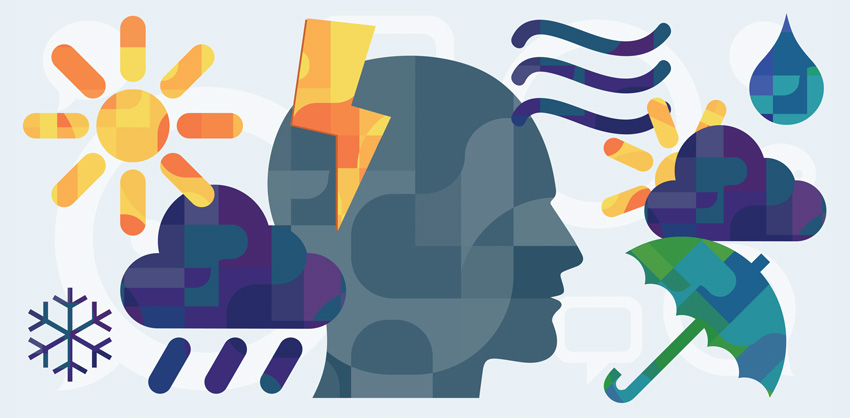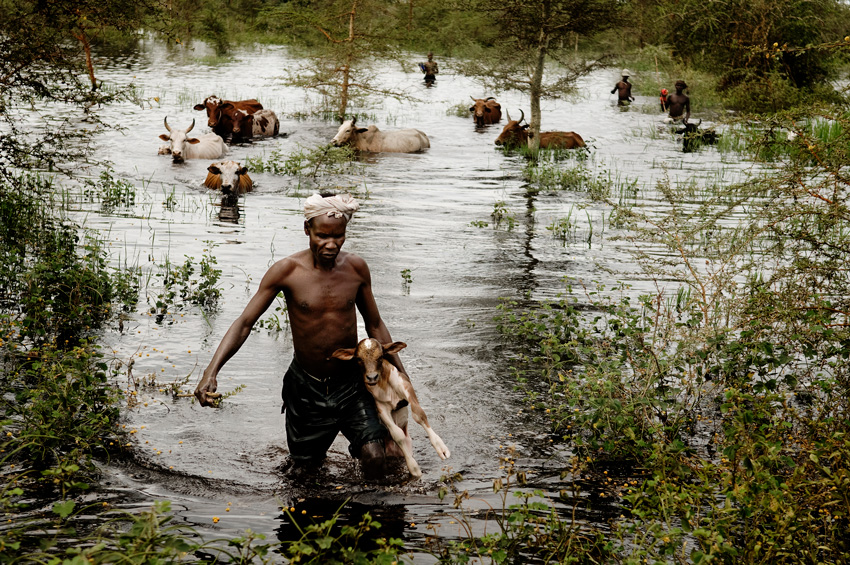Climate, Carbon, and Human Health
Learning Objectives:
- Identify and recognize the direct relationship between climate change and human health.
- Assess the impact that green building rating systems such as LEED are having on the reduction of greenhouse gas (GHG) emissions into the environment.
- Investigate the organizations and tools available to assist design and construction professionals in determining the carbon footprint of a building.
- Explore examples of different building and product types that can be designed and specified to work toward carbon-neutral or carbon-negative (storing) buildings.
Credits:
This course is approved as a Structured Course
This course can be self-reported to the AANB, as per their CE Guidelines
Approved for structured learning
Approved for Core Learning
This course can be self-reported to the NLAA
Course may qualify for Learning Hours with NWTAA
Course eligible for OAA Learning Hours
This course is approved as a core course
This course can be self-reported for Learning Units to the Architectural Institute of British Columbia
Typically when we think about global climate change, we don’t think about its impact on our human health. Rather, we may associate it with severe weather-related events, changes in plant and animal life, and other things that we perceive as separate from our bodies. However, whether we recognize it or not, the health of all people is being impacted by global climate change. In a November 2018 report published by The Lancet medical journal, scientists and health experts said rising heat and wilder weather linked to climate change make it “the biggest global health threat of the 21st century.” They cite climate change impacts, including heatwaves, storms, floods, and fires, that are threatening to overwhelm health systems. This is evidenced by their observation that hundreds of millions of people have already been suffering health impacts from climate change effects over the past two decades.

Climate change due to increasing levels of carbon dioxide in the air is not just about the impact on the health of the planet. There are real effects on human health too.
The recognized solution to this issue is to go directly to the source, namely, reduce the amount of carbon dioxide and other air-polluting greenhouse gases (GHG) that are being released into the atmosphere. Over the past 150 years or so, there has been an observable increase in these GHGs that has been tracked, recorded, and linked directly to changes in climate and temperatures. While transportation (i.e., cars, planes, etc.) and industry (i.e., coal-fired plants) are often pointed to as the problem, they aren’t the only ones. In fact, numerous sources, including the not-for-profit organization Architecture 2030, point to buildings as the source of approximately 40 percent of the annual GHG emissions globally. This is measured, in almost equal parts, in both the operations and construction of buildings. The operational carbon emissions come primarily from buildings relying on fossil-fuel-based energy sources to power the day-to-day functioning of these buildings, such as heating, cooling, and electric lighting. The construction-related emissions reflect the energy from fossil fuels that was required to produce the products and materials that go into buildings. Hence the term embodied carbon dioxide refers to the carbon dioxide emitted during the manufacture, transport, and construction of building materials, together with end-of-life emissions from disposal. This includes emissions from the raw materials used to create a building material, from the freight to transport a building material, and from the energy used in final manufacturing of a building product.
While some efforts, such as green building programs, have helped architects account for and reduce the environmental impact of the buildings that they design, there is an immediate need to do more in order to protect public health, safety, and welfare. In that regard, this course looks at climate change in light of some of the specific public health concerns, solution approaches, new tools, and application strategies. It will also provide some examples of products and building projects that are helping design professionals create carbon-neutral or even carbon-negative results by reducing and potentially sequestering carbon dioxide.
The Problem: Climate Change is a Public Health Concern
While climate change and its impacts are a worldwide issue, the United States government has been engaged in monitoring, assessing, and advising on the topic for many years. In particular, the U.S Department of Health and Human Services (HHS) Centers for Disease Control and Prevention (CDC) have teamed up with the American Public Health Administration (APHA) to look specifically at health questions related to climate change. Together, they have concluded, “Climate change poses many risks to human health. Some health impacts of climate change are already being felt in the United States.”1
These U.S. government agencies acknowledge what scientists around the world have pointed out: “When we burn fossil fuels such as coal and gas, we release carbon dioxide, which builds up in the atmosphere and causes earth’s temperature to rise, much like a blanket traps in heat. This extra trapped heat disrupts many of the interconnected systems in our environment.” Specifically, they have recognized four phenomena resulting from the burning of fossil fuels: 1) increased levels of carbon dioxide in the atmosphere; 2) rising air and water temperatures; 3) more extreme weather events around the country; and 4) rising sea levels. Further, they have begun to observe that each of these phenomena not only impacts the environments where people live but also human health.
Excerpts of some of the environmental and human health impacts that the CDC and APHA have identified and described include the following.2

Source: Centers for Disease Control and Prevention
Climate change impacts a wide range of health outcomes. This image from the Centers for Disease Control and Prevention (CDC) illustrates the most significant climate change impacts (rising temperatures, more extreme weather, rising sea levels, and increasing carbon dioxide levels), their effect on exposures, and the subsequent health outcomes that can result from these changes in exposures.
Air Pollution
The biggest direct human health impact from emissions into the atmosphere is that the air is less healthy to breathe. According to the National Climate Assessment, climate change will affect human health by increasing ground-level ozone and/or particulate matter air pollution in some locations. Ground-level ozone (a key component of smog) is associated with many health problems, including diminished lung function, increased hospital admissions and emergency department visits for asthma, and increases in premature deaths.
There are other less-direct impacts too. Higher air temperatures generally lead to an increase in allergens and harmful air pollutants, exposure to which causes health problems for many people. When sensitive individuals are simultaneously exposed to allergens and air pollutants, allergic reactions often become more severe. People with existing pollen allergies may have increased risk for acute respiratory effects.
Similarly, more and larger wildfires linked to climate change could also significantly reduce air quality and affect people’s health in a variety of ways. Smoke exposure increases acute (or sudden-onset) respiratory illness, respiratory and cardiovascular hospitalizations, and medical visits for lung illnesses. The frequency of wildfires is expected to increase as drought conditions become more prevalent.

The biggest direct impact on human health from emissions into the atmosphere is that the air is less healthy to breathe.
Extreme Heat
Climate change also affects human health due to the increasing frequency and intensity of extreme heat events. Increases in the overall temperature of the atmosphere and oceans associated with climate change cause changes in wind, moisture, and heat-circulation patterns. These changes contribute to shifts in weather events, including extended days of extreme heat, which can be dangerous to health or even fatal.

Extreme heat and record low rainfall in Europe during the summer of 2018 led to withered fields.
Extreme heat events can trigger a variety of heat-stress conditions, such as heat stroke, which is the most serious heat-related disorder. It occurs when body temperature rises rapidly in a heat event, the sweating mechanism fails, and the body cannot cool down. This condition can cause death or permanent disability if emergency treatment is not given. People with higher risk for heat-related illness include small children, the elderly, persons with chronic diseases, low-income populations, and outdoor workers. Many cities across the United States, including St. Louis, Philadelphia, Chicago, and Cincinnati, have seen large increases in death rates during heat waves.
Precipitation Extremes: Heavy Rainfall and Drought
Increases in precipitation extremes, either heavy rainfall events at one end or droughts at the other, can impact our health. Warmer temperatures cause more water to evaporate into the air and allow that air to hold more water. This sets the stage for heavier downpours. At the same time, global temperatures influence the way heat and moisture move around the planet, meaning drier conditions will occur in some regions of the world.
Over the past several decades, we have already seen an increase in the number of heavy precipitation events in the United States. These events have contributed to more severe flooding in certain regions. Floods are one of the deadliest weather-related hazards in the United States, second only to heat.

Image courtesy of World Health Organization
The recent floodings in Uganda is a disaster of great dimensions. More and more people are getting sick from malaria every day, the first cholera outbreaks are soon to come, and people have nothing to eat.
Other hazards can appear after a storm has passed. For example, flood waters often contain a variety of contaminants or harmful pollutants, including agricultural waste, chemicals, and raw sewage. In some cases, floods can overwhelm a region’s drainage or wastewater treatment systems, increasing the risk of exposure to bacteria, parasites, viruses, and other unhealthy pollutants. If a building becomes damp or flooded, it can develop mold, which affects indoor air quality. Living with poor air quality and in damp conditions has been shown to increase health problems, including aggravation of asthma and other upper respiratory tract symptoms, such as coughing and wheezing due to mold exposure. They also include lower respiratory tract infections like pneumonia.
People living in drought conditions may be more likely to encounter certain dangerous situations threatening their safety and well-being. These can range from wildfires to dust storms to flash floods.
















